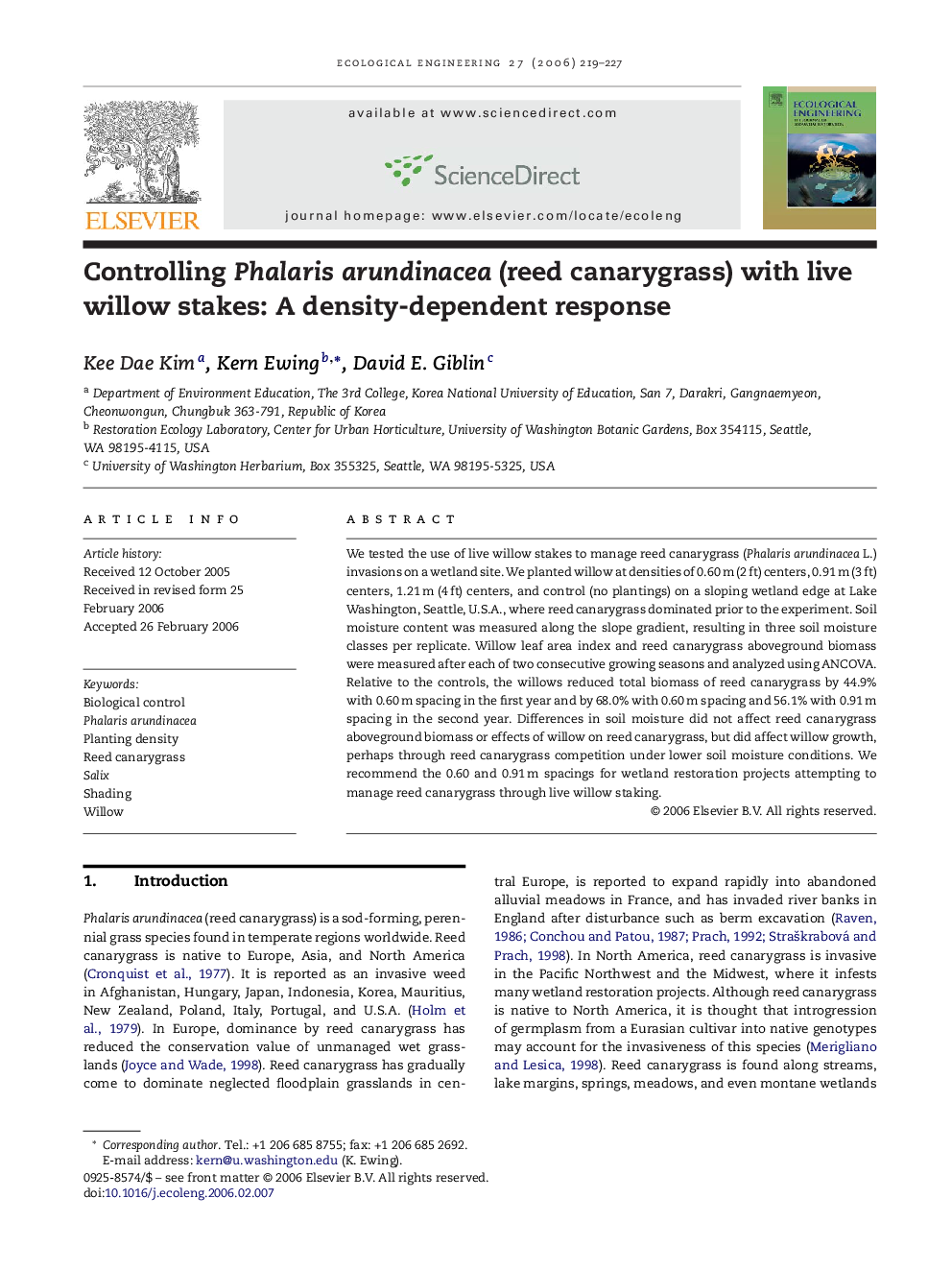| Article ID | Journal | Published Year | Pages | File Type |
|---|---|---|---|---|
| 4391298 | Ecological Engineering | 2006 | 9 Pages |
We tested the use of live willow stakes to manage reed canarygrass (Phalaris arundinacea L.) invasions on a wetland site. We planted willow at densities of 0.60 m (2 ft) centers, 0.91 m (3 ft) centers, 1.21 m (4 ft) centers, and control (no plantings) on a sloping wetland edge at Lake Washington, Seattle, U.S.A., where reed canarygrass dominated prior to the experiment. Soil moisture content was measured along the slope gradient, resulting in three soil moisture classes per replicate. Willow leaf area index and reed canarygrass aboveground biomass were measured after each of two consecutive growing seasons and analyzed using ANCOVA. Relative to the controls, the willows reduced total biomass of reed canarygrass by 44.9% with 0.60 m spacing in the first year and by 68.0% with 0.60 m spacing and 56.1% with 0.91 m spacing in the second year. Differences in soil moisture did not affect reed canarygrass aboveground biomass or effects of willow on reed canarygrass, but did affect willow growth, perhaps through reed canarygrass competition under lower soil moisture conditions. We recommend the 0.60 and 0.91 m spacings for wetland restoration projects attempting to manage reed canarygrass through live willow staking.
